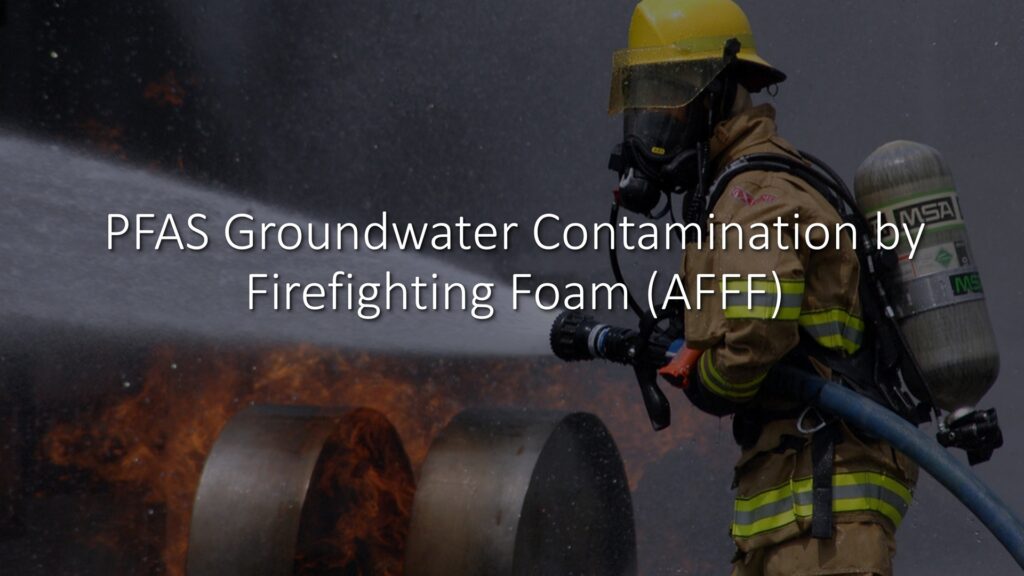This webinar excerpt explores how aqueous film-forming foam (AFFF) used in firefighting can lead to groundwater contamination, particularly at airports, military bases, and industrial sites. The video explains how per- and polyfluoroalkyl substances (PFAS), often called “forever chemicals,” migrate through the environment and impact groundwater, surface water, and ecosystems.
Key topics covered include:
- AFFF Usage & Contamination Sources – How firefighting foam is used in nozzle spray tests, fire training exercises, emergency fuel spill responses, and aircraft hangar suppression systems.
- Chemical Properties of PFAS – Explaining why PFOS, PFOA, and other PFAS compounds are highly resistant to degradation, heat, and water solubility, making them persistent in groundwater.
- Groundwater Contamination & Plume Migration – How AFFF infiltrates soil, dissolves into groundwater, and forms contaminant plumes, which migrate toward surface water bodies and drinking water sources.
- Ecological & Human Health Concerns – Discussion of bioaccumulation in muscle tissue, surface water impacts, and the presence of PFAS-contaminated fish, leading to public health advisories.
- Multiple Contaminant Plumes – Mapping overlapping PFAS sources from various release points, such as fire training areas, accidents, and suppression systems, leading to complex contamination patterns.
- Case Study of a Major Air Force Base – Examining a well-documented PFAS contamination site in Michigan, where multiple plumes have migrated thousands of feet and significantly exceed regulatory limits.
- Foam in Surface Water & Natural Foam Distinction – Differentiating between PFAS contamination and naturally occurring surface water foam to avoid misinterpretation of environmental observations.
This video is an excerpt from the seminar “Introduction to Groundwater Contamination”, presented to the UC Berkeley Department of Civil and Environmental Engineering in September 2021.

